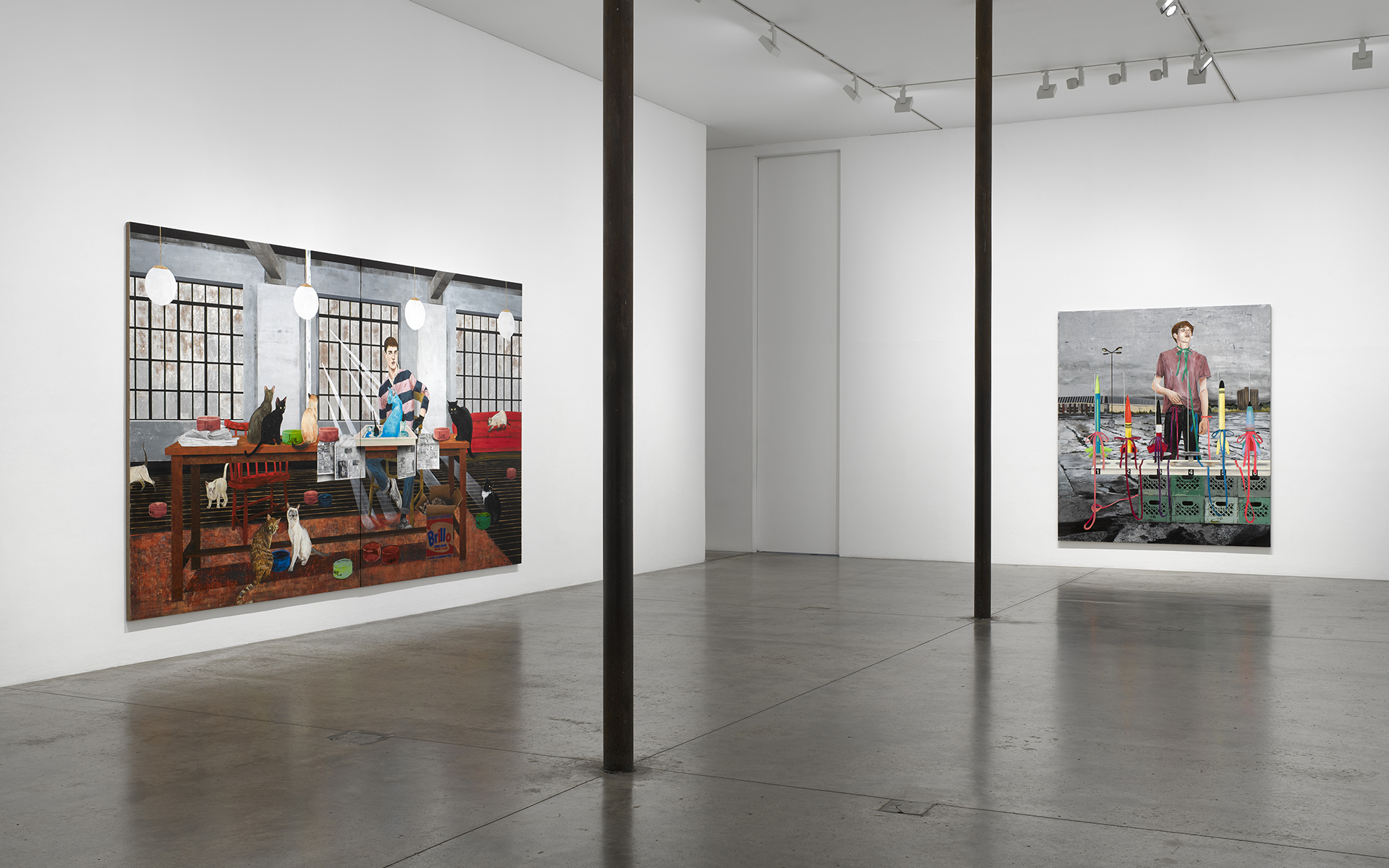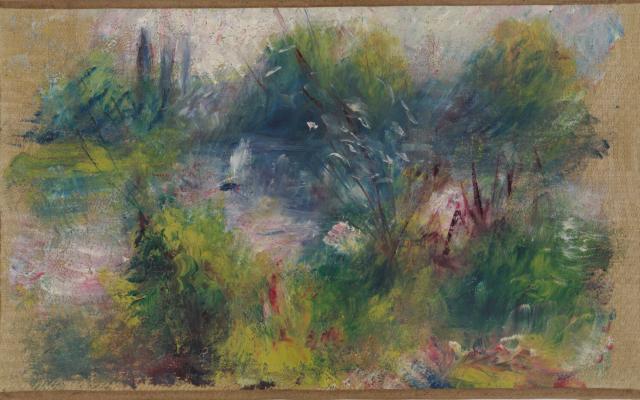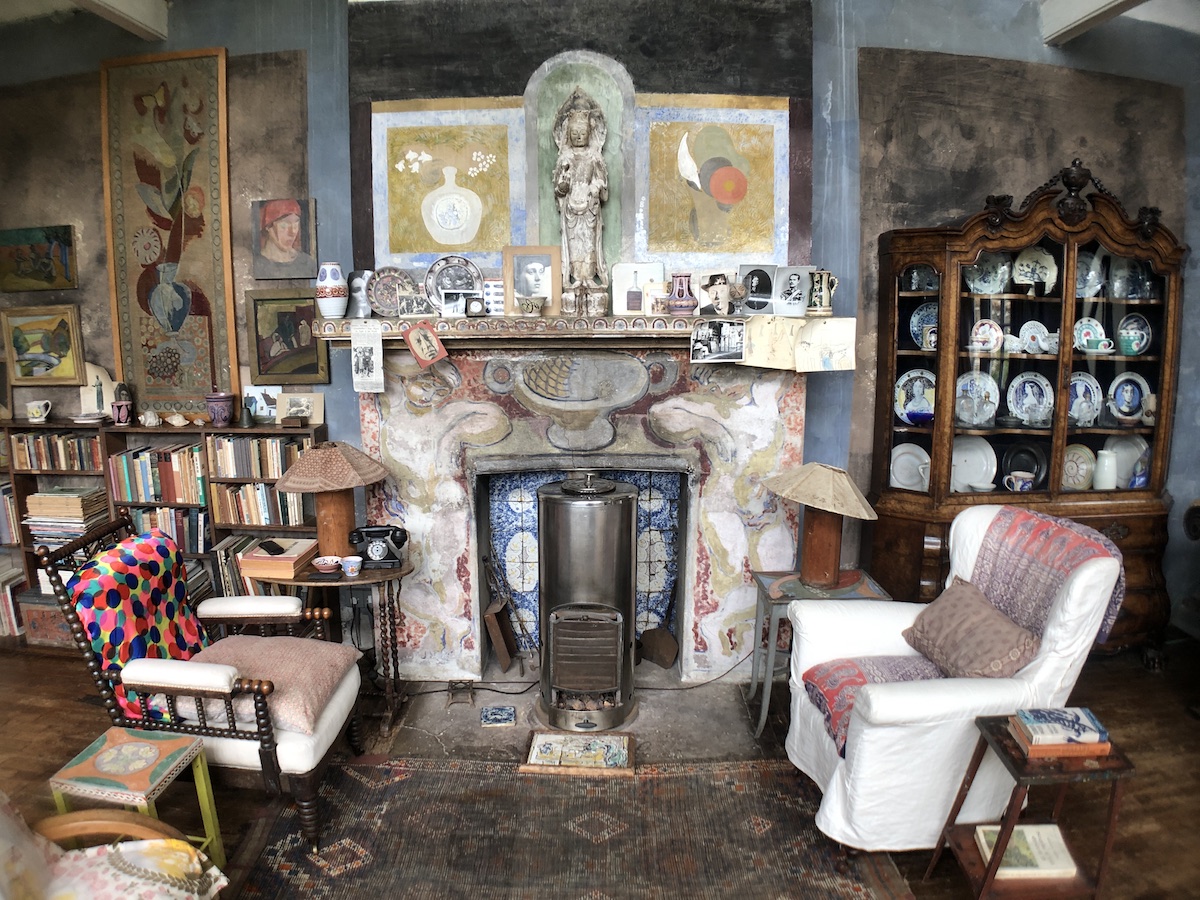Study of History III
2018 - Drawing & Print (Drawing & Print)
48 x 22.2 cm
Subas Tamang
Study of History III by Subas Tamang is an etching and aquatint print based on photographs taken by German photographer Volkmar Wentzel in 1949. Wentzel’s original color photographs document the transportation of a Mercedes Benz, carried on a wood armature by sixty porters, over a rocky trail from Bhimphedi to Kathmandu in Nepal. At the time of Wentzel’s photographs, paved roads in Nepal only existed within the Kathmandu Valley and cars had to be carried into the city from the surrounding hills on foot. Wentzel’s images have been reinterpreted by Subas to call attention to the oppression of the Tamang people by Nepal’s ruling class. Cars were imported for their lavish lifestyles, but little regard was given to common Nepalis or access to basic necessities for their health and well-being. Generations of Indigenous people paid the price for this opulence, the impacts of which are still felt to this day in Nepal. Subas’s work can also be read as performance—as an action embodying the violence of history. This refigured artwork by Subas is an attempt to understand, rediscover, and reinterpret Tamang history.
Part of the Indigenous Tamsaling community in Nepal, Subas Tamang comes from a family of traditional stone carvers. Subas often incorporates carving, engraving, as well as various printmaking techniques into his art practice. Much of Tamsaling history is based primarily on oral narrative traditions. Responding to the lack of documentation in his community’s historical legacy, Subas seeks to archive the cultural and social fabrics of his and other communities through art. Tamang is also a member of Artree, an artist collective formed in 2013 with Sheelasha Rajbhandari, Hit Man Gurung, Mekh Limbu, and Lavkant Chaudhary who come from a range of Indigenous communities of Nepal. ??Artree practices art collectively with the belief that it has deep roots in social practice. The mainstream narrative of Nepal and its surrounding region has historically excluded the stories and experiences of numerous disenfranchised Indigenous communities. Artree’s collective and individual practices draw attention to these dogmatic social hierarchies through installations, exhibitions, workshops and events.
Colors:
Related works sharing similar palette

© » KADIST
Curtis Talwst Santiago
2017Curtis Talwst Santiago has been creating intimate and performative environments within these small spaces for several years; the artist used to carry them around to show visitors one on one, opening up a scene in the space of his hand...

© » ARTOMITY
Zhang Wenzhi – ARTOMITY 藝源 Tiger in Mountains, Deer at Ocean / Blindspot Gallery / Hong Kong / Nov 28, 2023 – Jan 13, 2024 / Tiger in Mountains, Deer at Ocean , curated by Leo Li Chen at Blindspot Gallery, focuses on Zhang Wenzhi’s latest series of works, primarily consisting of large-format ink-on-paper pieces, accompanied by a video...

© » GALERIE MAGAZINE
5 Museum Exhibitions to See in Miami During Art Basel - Galerie Subscribe Art + Culture Interiors Style + Design Emerging Artists Discoveries Artist Guide More Creative Minds Life Imitates Art Real estate Events Video Galerie House of Art and Design Subscribe About Press Advertising Contact Us Follow Galerie Sign up to receive our newsletter Subscribe Installation view of "Hernan Bas: The Conceptualists" at the Bass Museum of Art, Miami Beach...

© » KADIST
Maya Watanabe
2021Maya Watanabe’s video installation Bullet unfolds within the context of the Peruvian justice and forensic systems...

© » KADIST
Gisela McDaniel
2020Got Your Back by Gisela McDaniel depicts two women of color from different ethnic backgrounds who share similar violent experiences...

© » ARTS EQUATOR
The ArtsEquator Logo Challenge: How Well Do You Know Your Southeast Asian Capitals? Thinking and Talking about Arts and Culture in Southeast Asia ArtsEquator Viewpoints January 22, 2019 Hands up if you’ve ever wondered what the ArtsEquator logo symbolises! 🙋 Few can identify all the Southeast Asian capitals represented by the red dots on the logo...

© » ART & OBJECT
Valuable Paintings Found in Unusual Places | Art & Object Skip to main content Subscribe to our free e-letter! Webform Your Email Address Role Art Collector/Enthusiast Artist Art World Professional Academic Country USA Afghanistan Albania Algeria American Samoa Andorra Angola Anguilla Antarctica Antigua & Barbuda Argentina Armenia Aruba Ascension Island Australia Austria Azerbaijan Bahamas Bahrain Bangladesh Barbados Belarus Belgium Belize Benin Bermuda Bhutan Bolivia Bosnia & Herzegovina Botswana Bouvet Island Brazil British Indian Ocean Territory British Virgin Islands Brunei Bulgaria Burkina Faso Burundi Cambodia Cameroon Canada Canary Islands Cape Verde Caribbean Netherlands Cayman Islands Central African Republic Ceuta & Melilla Chad Chile China Christmas Island Clipperton Island Cocos (Keeling) Islands Colombia Comoros Congo - Brazzaville Congo - Kinshasa Cook Islands Costa Rica Croatia Cuba Curaçao Cyprus Czechia Côte d’Ivoire Denmark Diego Garcia Djibouti Dominica Dominican Republic Ecuador Egypt El Salvador Equatorial Guinea Eritrea Estonia Eswatini Ethiopia Falkland Islands Faroe Islands Fiji Finland France French Guiana French Polynesia French Southern Territories Gabon Gambia Georgia Germany Ghana Gibraltar Greece Greenland Grenada Guadeloupe Guam Guatemala Guernsey Guinea Guinea-Bissau Guyana Haiti Heard & McDonald Islands Honduras Hong Kong SAR China Hungary Iceland India Indonesia Iran Iraq Ireland Isle of Man Israel Italy Jamaica Japan Jersey Jordan Kazakhstan Kenya Kiribati Kosovo Kuwait Kyrgyzstan Laos Latvia Lebanon Lesotho Liberia Libya Liechtenstein Lithuania Luxembourg Macao SAR China Madagascar Malawi Malaysia Maldives Mali Malta Marshall Islands Martinique Mauritania Mauritius Mayotte Mexico Micronesia Moldova Monaco Mongolia Montenegro Montserrat Morocco Mozambique Myanmar (Burma) Namibia Nauru Nepal Netherlands Netherlands Antilles New Caledonia New Zealand Nicaragua Niger Nigeria Niue Norfolk Island Northern Mariana Islands North Korea North Macedonia Norway Oman Outlying Oceania Pakistan Palau Palestinian Territories Panama Papua New Guinea Paraguay Peru Philippines Pitcairn Islands Poland Portugal Puerto Rico Qatar Romania Russia Rwanda Réunion Samoa San Marino Saudi Arabia Senegal Serbia Seychelles Sierra Leone Singapore Sint Maarten Slovakia Slovenia Solomon Islands Somalia South Africa South Georgia & South Sandwich Islands South Korea South Sudan Spain Sri Lanka St...

© » HYPERALLERGIC
10 Art Books to Add to Your Shelf This December Skip to content Kareem Khubchandani's Decolonize Drag , Sonya Clark's newest catalogue, and more books we're reading this December (photo Lakshmi Rivera Amin/ Hyperallergic ) If you’re shamefully counting the titles you didn’t get around to reading this year, know that you are not alone...

© » KADIST
Meschac Gaba
2010The headdresses, woven from artificial hair braids, symbolize historical icons including Martin Luther King, Kwame Nkrumah, Fela Kuti and King Guézo of Dahomey...

© » LONDONIST
A Tim Burton Exhibition Is Coming To The Design Museum | Londonist A Tim Burton Exhibition Is Coming To The Design Museum In 2024 By Hannah Newlon-Trujillo Hannah Newlon-Trujillo A Tim Burton Exhibition Is Coming To The Design Museum In 2024 See artworks, storyboards and costume designs by Tim Burton...










